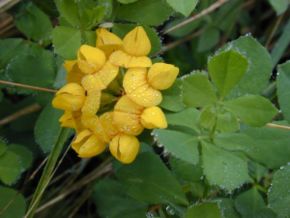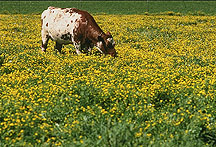Lotus (genus)
See Lotus for other uses, including several other plant taxa bearing this name.
| Lotus {{{status}}} Fossil range: {{{fossil_range}}}
| ||||||||||||||||||||||||||||||||||||||||||||||||||||||||||||||||||
|---|---|---|---|---|---|---|---|---|---|---|---|---|---|---|---|---|---|---|---|---|---|---|---|---|---|---|---|---|---|---|---|---|---|---|---|---|---|---|---|---|---|---|---|---|---|---|---|---|---|---|---|---|---|---|---|---|---|---|---|---|---|---|---|---|---|---|
 Lotus uliginosus- flowers | ||||||||||||||||||||||||||||||||||||||||||||||||||||||||||||||||||
| Plant Info | ||||||||||||||||||||||||||||||||||||||||||||||||||||||||||||||||||
| ||||||||||||||||||||||||||||||||||||||||||||||||||||||||||||||||||
| Scientific classification | ||||||||||||||||||||||||||||||||||||||||||||||||||||||||||||||||||
| ||||||||||||||||||||||||||||||||||||||||||||||||||||||||||||||||||
| [[{{{diversity_link}}}|Diversity]] | ||||||||||||||||||||||||||||||||||||||||||||||||||||||||||||||||||
| {{{diversity}}} | ||||||||||||||||||||||||||||||||||||||||||||||||||||||||||||||||||
| Binomial name | ||||||||||||||||||||||||||||||||||||||||||||||||||||||||||||||||||
| {{{binomial}}} | ||||||||||||||||||||||||||||||||||||||||||||||||||||||||||||||||||
| Trinomial name | ||||||||||||||||||||||||||||||||||||||||||||||||||||||||||||||||||
| {{{trinomial}}} | ||||||||||||||||||||||||||||||||||||||||||||||||||||||||||||||||||
| Type Species | ||||||||||||||||||||||||||||||||||||||||||||||||||||||||||||||||||
| {{{type_species}}} | ||||||||||||||||||||||||||||||||||||||||||||||||||||||||||||||||||
| Species | ||||||||||||||||||||||||||||||||||||||||||||||||||||||||||||||||||
| Between 70-150 species; see text | ||||||||||||||||||||||||||||||||||||||||||||||||||||||||||||||||||
| [[Image:{{{range_map}}}|{{{range_map_width}}}|]] | ||||||||||||||||||||||||||||||||||||||||||||||||||||||||||||||||||
| Synonyms | ||||||||||||||||||||||||||||||||||||||||||||||||||||||||||||||||||
| {{{synonyms}}} |
The genus Lotus (Bird's-foot Trefoil, Trefoil or Deervetch) contains approximately 150 species distributed world-wide. Lotus is a genus of legume and its members are adapted to a wide range of habitats, from coastal environments to high altitudes. Most species have leaves with three leaflets, but also two large stipules at the base roughly equal in size to the leaflets, thus appearing to have five leaflets; some species have pinnate leaves with up to 15 leaflets. The flowers are in clusters of 3-10 together at the apex of a stem with some basal leafy bracts, pea-flower shaped, vivid yellow or orange, occasionally red.
Lotus species are used as food plants by the larvae of some Lepidoptera species - see list of Lepidoptera which feed on birds-foot trefoils.
- Species
- Lotus aboriginus - Rosy Bird's-foot Trefoil
- Lotus alamosanus - Sonoran Bird's-foot Trefoil
- Lotus angustissimus - Slender Bird's-foot Trefoil
- Lotus argophyllus - Silver Bird's-foot Trefoil
- Lotus argyraeus - Canyon Bird's-foot Trefoil
- Lotus benthamii - Bentham's Deervetch
- Lotus berthelotii - Canary Islands Trefoil
- Lotus corniculatus - Common Bird's-foot Trefoil
- Lotus crassifolius - Big Deervetch
- Lotus creticus
- Lotus dendroideus - Island Deervetch
- Lotus denticulatus - Riverbar Bird's-foot Trefoil
- Lotus formosissimus - Seaside Bird's-foot Trefoil
- Lotus glaber - Narrow-leaf Bird's-foot Trefoil
- Lotus grandiflorus - Chaparral Bird's-foot Trefoil
- Lotus greenei - Greene's Bird's-foot Trefoil
- Lotus hamatus - San Diego Bird's-foot Trefoil
- Lotus haydonii - Rock Bird's-foot Trefoil
- Lotus heermannii - Heermann's Bird's-foot Trefoil
- Lotus humistratus - Foothill Deervetch
- Lotus incanus - Woolly Bird's-foot Trefoil
- Lotus intricatus - Arid Bird's-foot Trefoil
- Lotus jacobaeus
- Lotus japonicus
- Lotus junceus - Rush Deervetch
- Lotus maritimus
- Lotus mearnsii - Mearns' Bird's-foot Trefoil
- Lotus micranthus - Desert Deervetch
- Lotus nevadensis - Nevada Bird's-foot Trefoil
- Lotus nuttallianus - Wire Bird's-foot Trefoil
- Lotus oblongifolius - Streambank Bird's-foot Trefoil
- Lotus ornithopoides
- Lotus palustris
- Lotus parviflorus - Smallflower Bird's-foot Trefoil
- Lotus pedunculatus - Big Trefoil
- Lotus pinnatus - Meadow Bird's-foot Trefoil
- Lotus plebeius - New Mexico Bird's-foot Trefoil
- Lotus procumbens - Silky Deerweed
- Lotus rigidus - (Desert rock pea), Shrubby Deervetch
- Lotus rubriflorus - Redflower Bird's-foot Trefoil
- Lotus salsuginosus - Coastal Bird's-foot Trefoil
- Lotus scoparius - Common Deerweed
- Lotus sessilifolius
- Lotus stipularis - Balsam Bird's-foot Trefoil
- Lotus strigosus - Strigose Bird's-foot Trefoil
- Lotus suaveolens - Hairy Bird's-foot Trefoil
- Lotus subbiflorus - Hairy Bird's-foot Trefoil
- Lotus tenuis - Narrowleaf Bird's-foot Trefoil
- Lotus tetragonolobus - Winged Bird's-foot Trefoil
- Lotus unifoliolatus - American Bird's-foot Trefoil
- Lotus uliginosus - Greater Bird's-foot Trefoil
- Lotus utahensis - Utah Bird's-foot Trefoil
- Lotus wrangelianus - Chilean Bird's-foot Trefoil
- [[Lotus wri
ghtii]] - Wright's Deervetch
- Lotus yollabolliensis - Yolla Bolly Bird's-foot Trefoil
Uses

Several species are culvivated for forage, including L. corniculatus, L. glaber and L. uliginosus. Scentific research for crop improvement and understanding the general biology of the genus is focused on L. japonicus which is currently the subject of a full genome sequencing project, and is considered a model organism.
They can produce toxic cyanogenic glycosides which can be potentially toxic to livestock, but also produce tannins, which are a beneficial anti-bloating compound.
Some species, such as L. berthelotii from the Canary Islands, are grown as ornamental plants. L. corniculatus is an invasive species in some regions of North America and Australia.